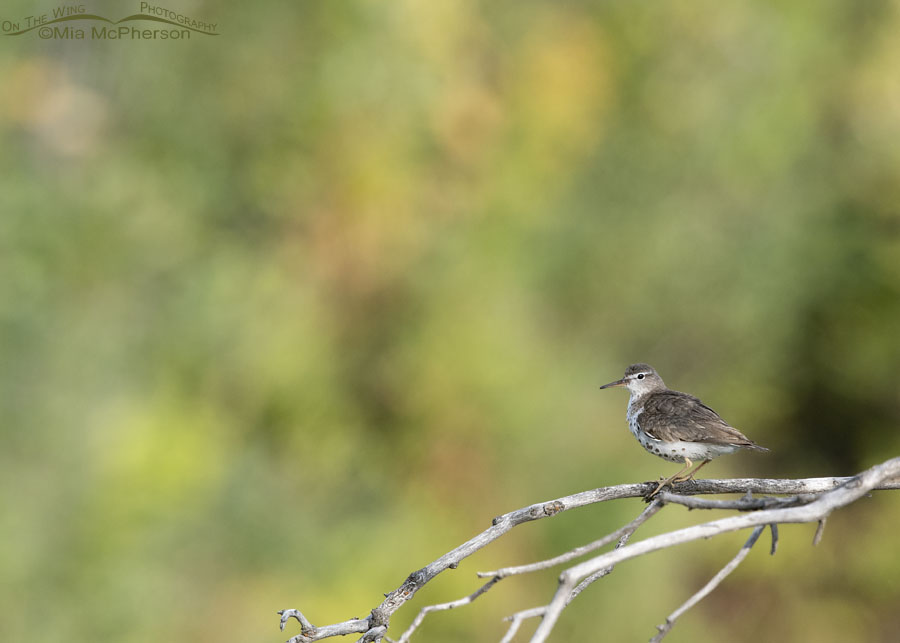 Spotted Sandpiper adult perched on a branch in late summer – Nikon D500, f7.1, 1/500, ISO 500, Nikkor 500mm VR with 1.4x TC, natural light
Spotted Sandpiper adult perched on a branch in late summer – Nikon D500, f7.1, 1/500, ISO 500, Nikkor 500mm VR with 1.4x TC, natural light
The seemingly endless grayness of this winter has begun to wear on me so today I wanted to share a bird image taken last August in a canyon high in the Wasatch Mountains.
It was a little chilly that morning as it often is at the end of summer at higher altitudes and I had driven up to some canyons to see if I could find some birds to focus on. I found several young Black-billed Magpies, Yellow Warblers, some young Lazuli Buntings, and one adult Spotted Sandpiper.
The Spotted Sandpiper, which I presume to be a male, perched on a branch over a creek with shrubs in the background that had started to turn to fall colors. I believe this Spotted Sandpiper was watching over its young that were down on the ground below it although I never saw them that day, I did hear them. I had however been seeing and photographing an adult with chicks in this same area for a few weeks.
Spotted Sandpiper males usually incubate and raise the young which is why I believe this sandpiper was a male. Female Spotted Sandpipers generally mate with more than one male, lay their eggs, and find another mate, this is called polyandry.
I don’t often see Spotted Sandpipers perched in trees so I was enchanted when this one landed on the bare branches that hung over a slow flowing creek. I recall wishing the branches had been closer to where I sat in my Jeep using it as a mobile blind but I actually liked this image because the bird is small in the frame and is surrounded by a splash of color.
In the interest of full disclosure I digitally removed the tip of an out of focus branch from the right side of the frame that was about 1/3 of the way down from the top that I felt was distracting.
The day I took the series of photos of this bird was also the last time I saw a Spotted Sandpiper last year. I have missed seeing them bouncing their bottoms up and down as they walk, missed hearing their calls, and have missed photographing them as they go about their lives during the breeding season here in northern Utah. They will be back before I know it though and I look forward to seeing them through my viewfinder again.
I’ve just got to get through the grayness of February.
Life is good.
Mia
Click here to see more of my Spotted Sandpiper photos plus facts and information about this species.


I first learned about Sandpipers when I read the book with the same title. There were pictures of the birds walking in the surf of the Pacific Ocean. It was made into a movie starring Elizabeth Taylor and Richard Burton.
So it was interesting to get real information about the tiny birds. You’re giving me an education about birds.
A small framed charmer.
I have never seen a Spotted Sandpiper in a tree.. I’m glad you shared it. I have never thought to look at overhanging branches before. I will be on the lookout now.
How fun to see one in the trees. Most Sandpipers I see are on the ground to flying around.